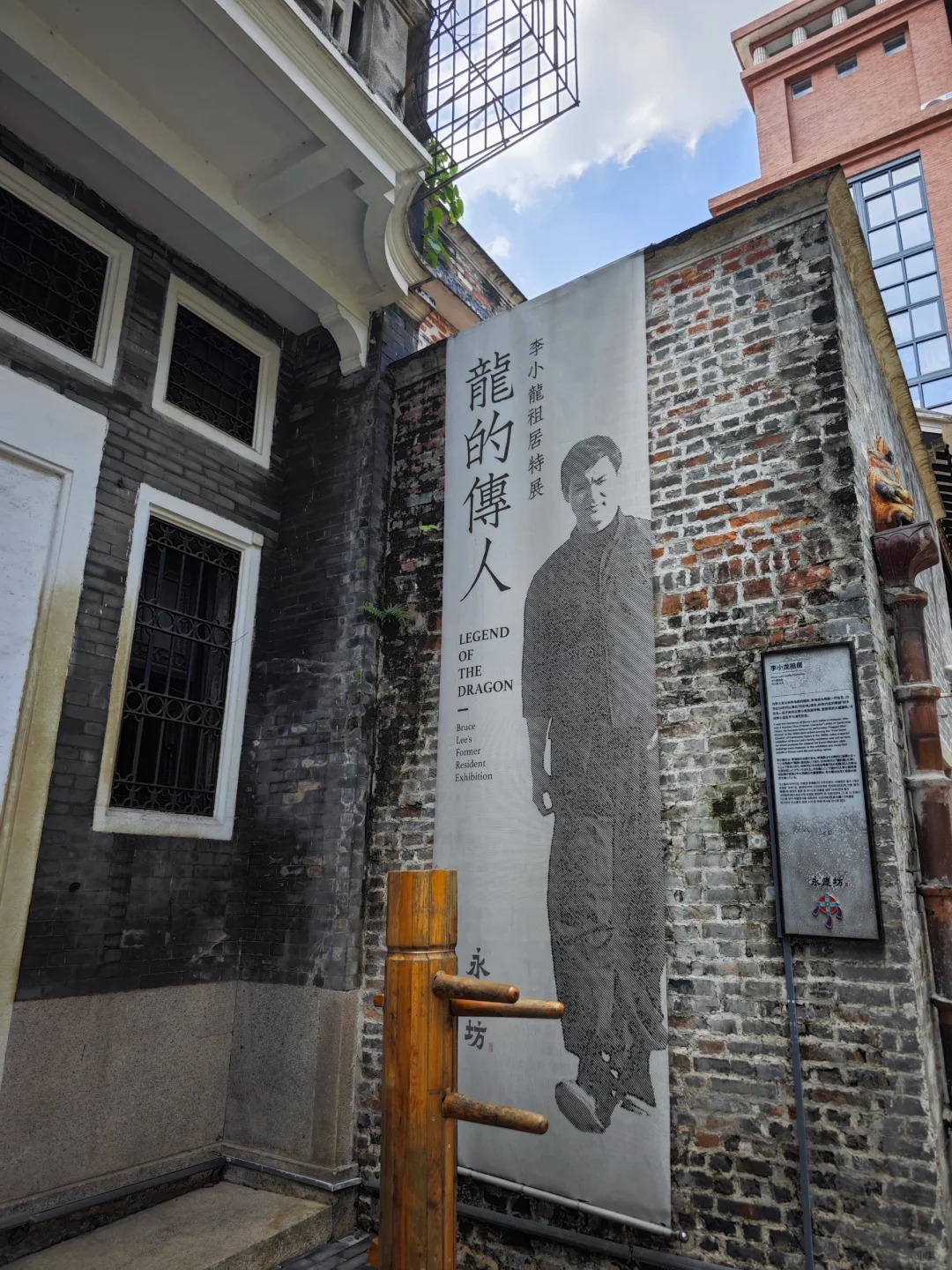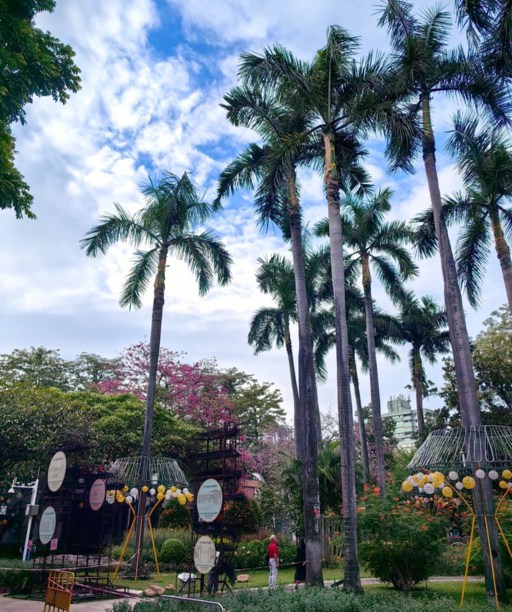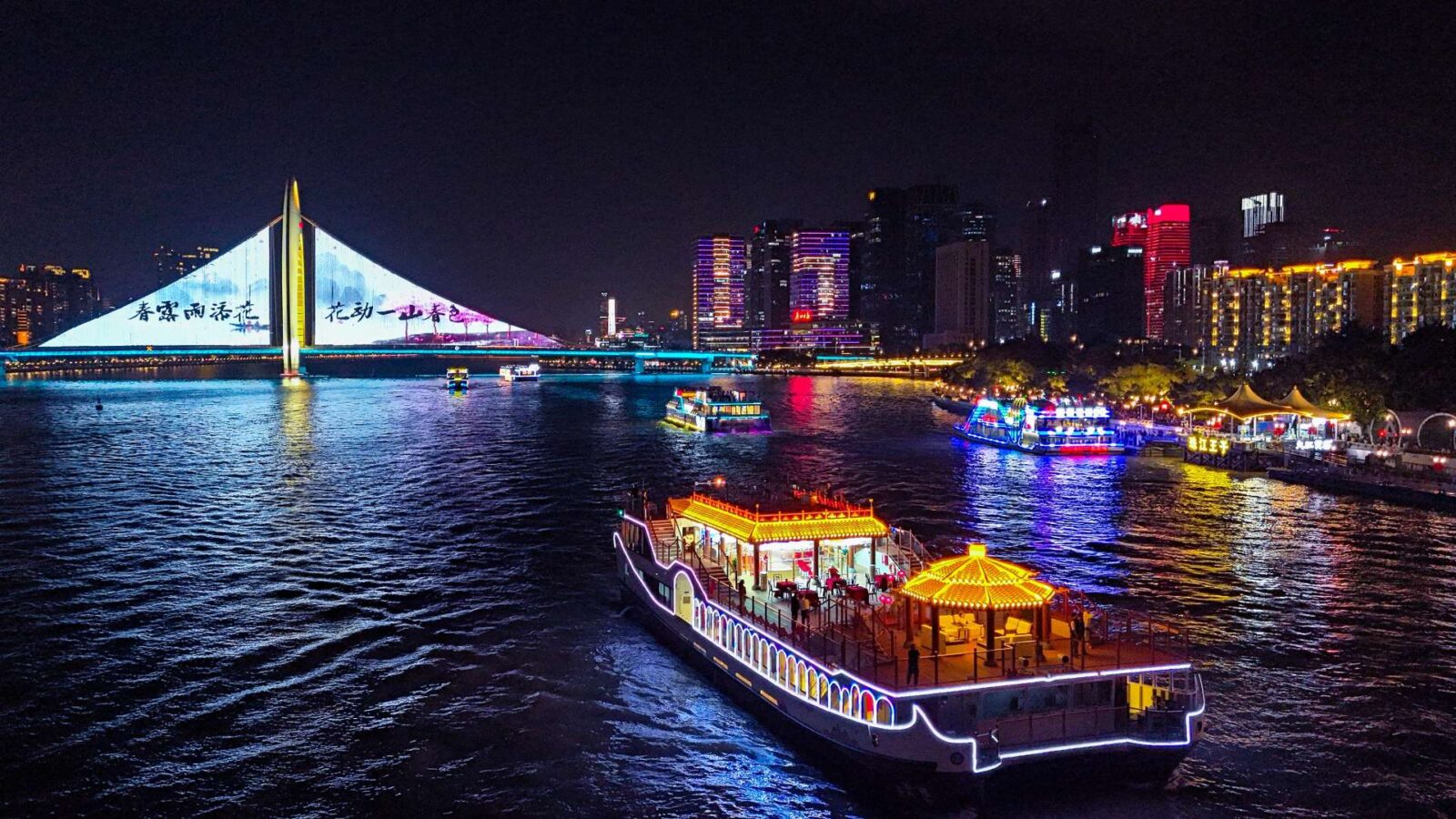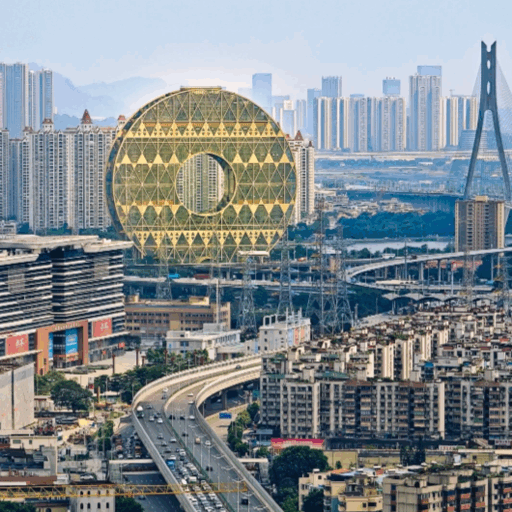
Guangzhou Circle
From the riverside, the Guangzhou Circle is eye-catching. Its circular frame captures the late afternoon sun, and reflects a mirrored “8” back onto the Pearl River. Tourists hover with phones aloft, pointing while local office workers look up, eyebrows raised as if to ask: What on earth are they looking at?
Getting closer to the base, the building’s size is even more surprising: At around 138 meters tall, it's one of the tallest round buildings in the world. Most people think it contains a hotel, or apartments, but it’s mainly offices, corporate suites. And yet, the aura is undeniably there: this coin-shaped building in Guangzhou, all modern design and centuries of cultural symbolism combined, suggests wealth and fortune. Through seeing it in person, you quickly realise that if you left it out, you’d be missing something pretty special.
What is the Guangzhou Circle? (Overview & Quick Facts)
Guangzhou Circle height and diameter
The Guangzhou Circle stands at around 138 meters, and is among the highest of all circular buildings. With a diameter of approximately 146 metres, it contains some 33 office and exhibition floors. Sitting on the Pearl River, you can’t capture in photos how massive the building feels. Its mirrored reflection nearly doubles the effect, forming a figure 8 considered lucky in Chinese culture and seeming to stretch toward infinity.
Passers-by walking or cycling often stop mid-stride, cameras ready, trying to capture the illusion. The building looms gigantic yet fills viewers with awe, where engineering meets a playful nod to tradition.
Guangzhou Circle location and address
The Guangzhou Circle sits on the banks of the Pearl River in Haizhu District, a quick ferry ride downriver from central Canton Tower. Its precise location is 1 Yinwan Road, Haizhu District, Guangzhou (广州海珠区银湾路1号). Pinyin and English signposts lead the way; although older guidebooks might reference outmoded landmarks in the vicinity. On the riverside, where delivery trucks and office workers bustle, we get a feel for this building as it exists beyond tourist snap shots. For those visiting for the first time, a walk along the riverbank or on the Metro line past adjacent stations offers great views of it in all its magnificent circular glory.
Guangzhou Circle construction & architect
The Guangzhou Circle was designed by Italian architect Joseph di Pasquale and built in 2013. It’s also otherworldly: a daring circular frame formed by steel, glass and reinforced concrete that has garnered the structure multiple architecture awards. The aesthetic was specifically inspired by ancient Chinese coins, combining contemporary appearance with the symbolic connotations of wealth and prosperity.
Studying the engineering close-up, you can see that every curve has been carefully calculated — not just for looks but to communicate cultural resonance. Even the golden facade reflects light differently at different times of day, which produces a dynamic effect that competes with the treatment of some riverside and nearby streets.
History & Symbolism of the Guangzhou Circle
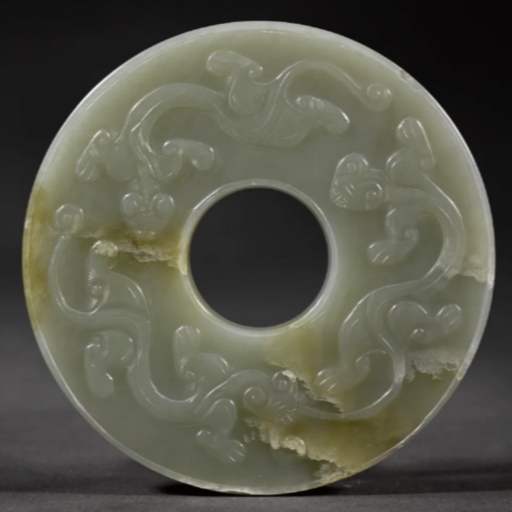
Jade Bi of China
The inspiration of jade bi — circular heaven/earth cosmology, rituals, museum references
The Guangzhou Circle is circular for a reason. Much of its design references the jade bi, a prehistoric Chinese disk. These disks were round, with a hole in the center, used in rituals to represent the sky and the link between heaven and earth.
Walking by the building, you notice how the hollow center mirrors the emptiness inside. This design conveys openness and equilibrium to viewers. Two museums, in Guangzhou and Beijing, house jade bi works thousands of years old. Placing them alongside the modern structure emphasizes a deliberate connection. The architect sought more than a landmark; he aimed for a cultural statement. Reflected on the Pearl River, the building suggests infinity and continuity, making the city feel like it is performing an ancient ritual.
The role of copper coins in Chinese history — square-hole coins, feng shui, prosperity symbol
The Guangzhou Circle similarly invokes the spirit of ancient Chinese copper coins with square holes through their centers. Those coins were not just money, they were representation that people are wealthy and!ucky. In feng shui, a circle with a central void is a symbol of balanced energy, wealth that flows in harmony. Local guides often say that the building’s shape, like a coin edge on, is no accident and combines finance with luck. Even the locals laugh, taking selfies while quipping about “the city’s big money sign” — a knowing nod to the symbolism. “It’s this talismanic quality that, reading pictures of our visitors on TripAdvisor, multiple pointed out you seem to get from the building,” Gebhard said — a bracing sense that walking past could be lucky — “and obviously means more than just what it looks like.”
How the Guangzhou Circle translates ancient symbols into modern design — golden façade, reflection forming “8”
The golden exterior of the Guangzhou Circle combines modern engineering with tradition. The reflective glass and metal shine differently depending on sunlight and viewing angle. This shifting light creates a liquid-like effect that, thanks to the building’s muscular swoop, almost makes it pulse. Reflections on the river or nearby bridges form an unbroken “8.” This number holds lucky meaning in Chinese culture, symbolizing wealth and success.
This design shows how architects combine a circular jade bi with currency shapes seen in coins. Adding reflections forming “8” makes the building more than a costly shoebox. It becomes architecture as story, carefully built with intention. Visitors may also see it as a bridge linking past and present. Cultural heritage supports the design, while modernity amplifies meanings long embedded in tradition. Each visit feels quasi-ceremonial, briefly connecting you with a story thousands of years old, even if only during an Instagram moment.
Interior & Function — What Is the Guangzhou Circle Used For?
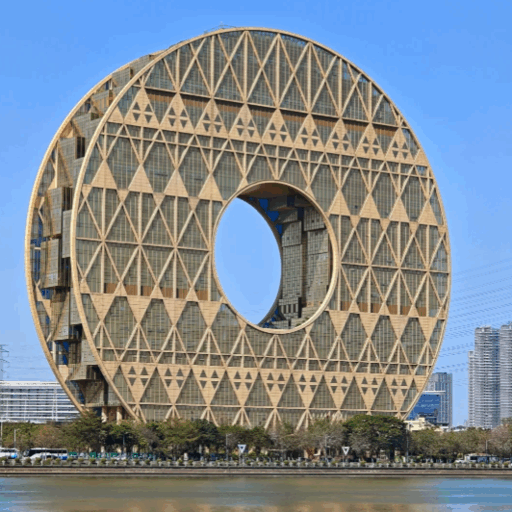
Close-up of the Guangzhou Circle
Guangzhou Circle interior design
Walking toward the Guangzhou Circle, you quickly imagine stepping inside a museum from the future — until entering. Inside, the building holds mostly offices and exhibition halls. Wide corridors and atriums appear here and there, punctuated by art installations reflecting cultural aspirations. The building offers no tourist lobby and no hotel-style check-in desk with bellhops. Instead, it provides professional spaces designed for work and exhibition. Natural light filters through the rounded frame into the atrium. It casts patterned reflections on polished floors and corridors, creating an almost ritualistic atmosphere. For anyone curious about the Guangzhou Circle interior, the experience offers not sightseeing but a case study in blending function and visual impact.
Tenants & usage
Pearl River Investment has its headquarters and most of the floors are financial or corporate services. Culture, art, public talks Sometimes culture events, art exhibitions or public lecture are held in prepared space, but again it is occasional and made only for local advertisement. From the outside we also can see employees traveling back and forth, office windows reflecting natural light and occasionally banners shedding light about events. The function of the building is to promote commerce and connectivity along the Pearl River, not hospitality or residential living. It’s a charting landmark, active to the rhythm of office hours rather than the all-day back-and-forth of hotel check-ins.
Common myths (hotel/apartments?)
For all its looks the Guangzhou Circle is not a hotel or residential complex. There’s a common falsehood online, fueled by misleading images and social media posts, that you can book a room “inside the giant coin.” But in practice, it’s largely commercial offices with limited public access to the interior. The only way visitors might step inside is for occasional guided exhibitions. So if you’re considering heading there, the emphasis should be on looking at, photographing and appreciating the architecture — not booking a room. This clarifies matters, and prevents disappointment while helping first-time visitors manage expectations about what the Guangzhou Circle is actually used for.
Guangzhou Circle in the City Context — Why It Matters
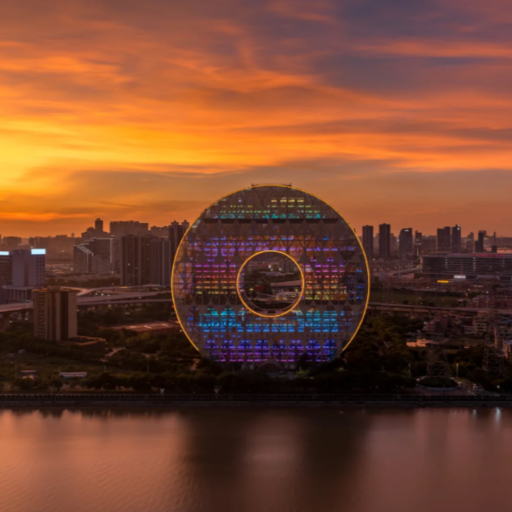
Guangzhou Circle at Dusk
How the Circle fits Guangzhou’s modern skyline
Among the glass towers of Zhujiang New Town and sleek lines of IFC Guangzhou, the Guangzhou Circle stands out with its circular silhouette. Unlike the tapering Canton Tower or boxy office blocks nearby, its circular frame creates a visual focus from river crossings and pedestrian viewpoints. The building interacts dynamically with its neighbors and skyline, reflecting sunlight and shadows differently throughout the day. This interplay highlights Guangzhou’s futuristic architectural ambitions, blending bold design, cultural cues, and visual storytelling. The Guangzhou Circle skyline serves not just as a backdrop, but as a statement, merging tradition and urban development in one sweeping vista.
Local reactions & traveler reviews
Reception of the Guangzhou Circle has been mixed. On TripAdvisor, some visitors have raved about the daring design and the mirrored “8” reflection, calling it striking and photogenic. Others consider it strange, or jarring, particularly compared with other more traditional skyscrapers nearby. Locals tend to be casual toward it — office workers pass by every day, some stopping to look but most going about their everyday lives. The gap between the first-time awe and daily doldrums underscores its split personality: a tourist attraction and a working corporate building. That duality plays out in Guangzhou circle reviews — it’s celebrated as a striking concept and derided as iffy pragmatics. You feel it for yourself and the way you perceive it often changes — you can see the architectural gamble, even if you’re not entirely certain that it’s beautiful.
Visitor Guide — How to See the Guangzhou Circle
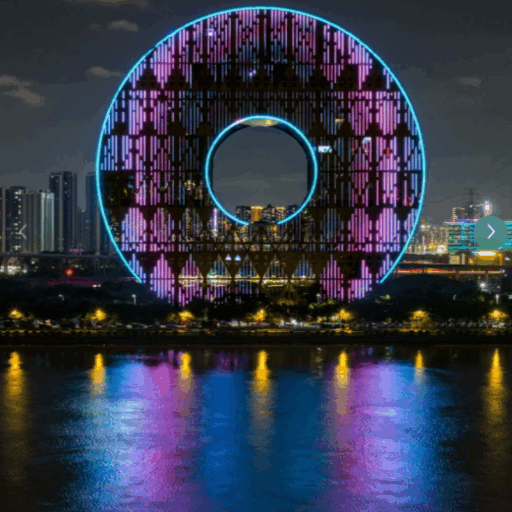
Night Scene of Guangzhou Circle
Guangzhou Circle map & directions
It’s not as difficult as you might think to find the Guangzhou Circle, but first-timers should come with a good plan of attack. It’s at the edge of the Pearl River in Haizhu District and the closest Metro stop is Huangsha Station, on Line 1; then a quick taxi or e-bike ride down Yinwan Road. If you want a more detailed exploration plan, check out this complete guide to Guangzhou city tours. A few bus lines — including Bus 24 and 63 — stop within a five-minute walk of the site. Bring a car, there’s some very limited parking near the office entrances but it fills up early during weekday mornings.
By taxi from Canton Tower: 10-15 minutes (depending on the traffic). Maps and signage in English and pinyin (the romanization of Chinese characters) may refer to the structure as “Guangzhou Circle Building” or simply 圆楼, so keep an eye out. For those preparing a self-guided tour, pulling up a guangzhou circle map on Baidu Maps or Google Maps will reveal vantage points along the river and pedestrian paths nearby.
Best photo spots & timing
“The Circle” reflecting on the Pearl River is usually irresistible for photographers and Instagram hounds. Prime time is sunset. Golden light reflects off the circular frame, creating the mirrored “8” effect that seems almost unreal. Bridges over the river offer high-angle shots, while riverside walkways let you photograph the façade textures up close. Technically, drone photography is allowed, but you need permits. Most visitors choose safer vantage points, like Dongsha Bridge or nearby hotels with river views. Morning light works too if you prefer softer shadows. Avoid noon glare — it makes the building appear like a second sky.
If you’d like to include people in your shots, during the evening on weekdays office workers have often walked home alongside you, bringing some life into your shots. A carefully timed schedule will maximize the impact of the buildings design.
Practical tips & pitfalls
For all its allure, the Guangzhou Circle is first and foremost a business building. You can't just wander inside (public access is limited); guided exhibits are hard to come by and tend to be promoted locally. Language barriers can be a bit tricky — most signage is bilingual, but staff may speak very little English, so you’ll want to bring your smartphone translation app. For more helpful insights on local etiquette and navigating interactions, see this practical guide to Chinese customs. Mind the riverside promenades: delivery tricycles and bikes buzz fast, and pitted pavement can startle unwary pedestrians.
Carry cash or mobile payment like WeChat or Alipay, as a few vendors nearby do not accept cards. On the photography side, aim for reflective surfaces and crowds: don’t come at midday, and give photographing a try when you have calm waters and the very best mirror “8.” Applying these tips will help make your trip to guangzhou circle be smoother, safer and more rewarding.
FAQ About the Guangzhou Circle
Q: What is the Guangzhou Circle building used for?
The "16" is a commercial office building and SPACE exhibition hall. As is usually the case in China, most floors are rented by financial services (Pearl River Investment headquarters) and there are sometimes cultural events or exhibitions in purpose built halls. It is not intended to be a hotel or housing development. No one really comes to stay, or even take a casual tour; most visitors are there to admire the architecture, photograph the views along the Pearl River or attend private events. This functional blend is characteristic of Guangzhou’s image as a modern business center.
Q: Is the Guangzhou Circle open to visitors inside?
There will be no public access in the building. Though the atriums and some of the exhibition halls could see events open to the public, for the most part, “the only people who will get inside are office workers. Tourists can not wander the building and guided tours are hardly ever available. For most tourists, the experience is about looking at the façade, photographing reflections on the river and walking to nearby riverside walkways. This way you will know what spots are open to hike into before the hunt.
Q: How tall is the Guangzhou Circle?
The height of guangzhou circle ring is about 138 meters, and a total number of floors is 33. It has a diameter of approximately 146 meters and is one of the tallest circular buildings in the world. Its height adds to its impressive skyline appearance from the Pearl River and nearby bridges. Its size, along with the reflection it creates, give off the impression of a giant coin floating on top of the water to first-time observers.
Q: Can you stay in the Guangzhou Circle hotel?
No, the Guangzhou Circle is not a hotel. There may be misleading social media posts or travel guides, but there are no rooms available to the public. It’s almost entirely commercial offices with some exhibition spaces. To try to stay here would be a mistake, so picture takers should concentrate on photography, river views and nearby hotels if they need an overnight somewhere.
Q: What is the meaning behind the Guangzhou Circle’s design?
Its design is inspired by ancient jade bi discs and Chinese copper coins, which represent heaven, earth and prosperity. The round shape and central hole represent jade bi, while the circular design is all about creating wealth and luck, especially doubled by their reflection as an “8”. The golden envelope translates these meanings into an exterior with a traditional reference, which is combined with contemporary architecture. The building, in short, is a cultural statement as well as a functioning structure, one that marries symbolism with engineering propriety.
Q: When is the best time to take photo of Guangzhou Circle?
Sunset is the optimal time, when the golden façade and reflection of the river make it feel like two “8” s pulled out and joint in a starry sky. Morning light is sometimes soft and flattering. Beware of noon glare, as that depletes reflections. Bridges and riverside walks offer numerous vantage points; if you’re out on a weekday evening, office workers could create some animation in your foreground. Taking into account light and crowds helps lead to the most visually arresting shots.
Q: Is Guangzhou Circle the only coin-shaped building in the world?
While round buildings exist elsewhere, the Guangzhou Circle ranks among the tallest and most symbolic structures intentionally designed this way. Its size, cultural references, and reflective features remain unique. Nowhere else combines ancient Chinese coin symbolism with modern high-rise architecture so seamlessly. Nowhere else in the world, visitors to other circular buildings scarcely observe such a size or cultural significance value.
Q: How long should I plan to spend at the Guangzhou Circle?
The majority of tourists allocate enough time to walk the bank for 30–60 minutes, make their pictures of the façade and see watery mirror images. Visits any longer than that are only necessary when the special exhibitions are on. Well located as part of a larger Haizhu District or Pearl River itinerary, you’ll capture the building’s essence without waiting about for too long.
